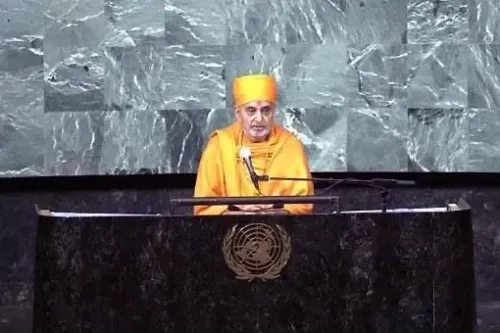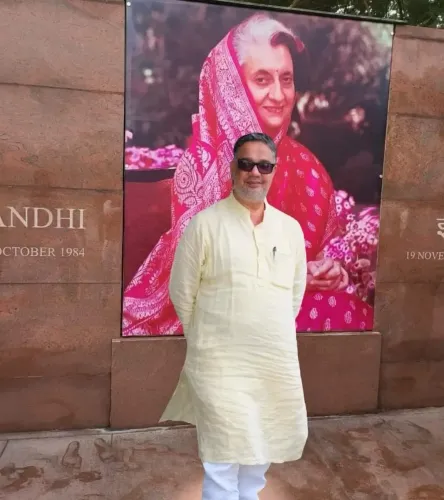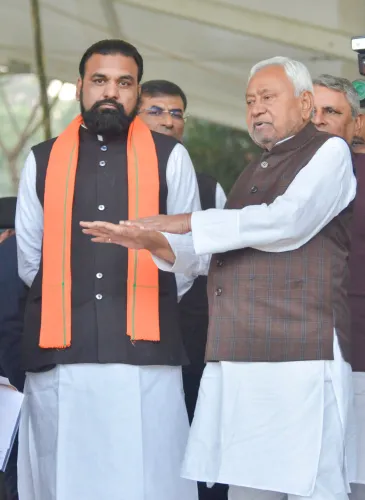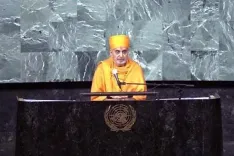Is Arunachal Pradesh on Track to Cultivate 35,723 Hectares of Oil Palm by 2025-26?
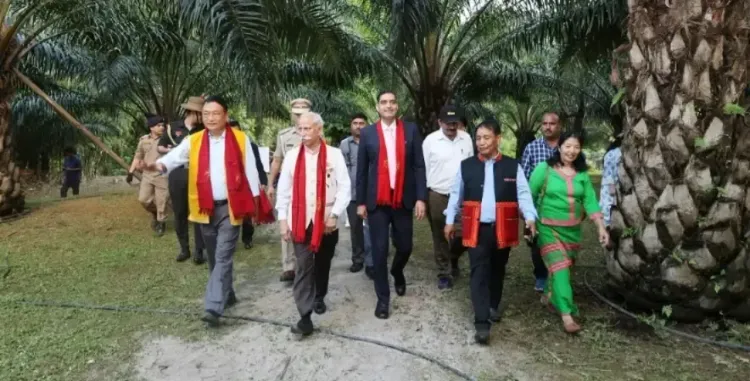
Synopsis
Key Takeaways
- Arunachal Pradesh aims for 35,723 hectares of oil palm cultivation by 2025-26.
- Current expansion stands at 4,690 hectares, benefiting nearly 2,000 farmers.
- The first crude palm oil mill in India is located in Roing.
- Oil palm cultivation promotes economic growth and self-reliance.
- Farmers report increased demand for palm oil due to new processing factories.
Itanagar, Oct 6 (NationPress) Arunachal Pradesh Governor Lt. General K.T. Parnaik (Retd.) announced on Monday that oil palm cultivation has already increased by 4,690 hectares in the region, positively impacting nearly 2,000 farmers through the ‘Per Drop More Crop’ initiative.
Looking forward, the Governor stated that the state aims to achieve a remarkable target of cultivating 35,723 hectares of oil palm by 2025-26. During his visit to a 4-hectare oil palm farm owned by progressive farmer Miti Megu Perme in Bosi Didum Village, Pasighat district, he underscored the government’s commitment to enhancing oil palm farming throughout Arunachal Pradesh.
The establishment of India’s first crude palm oil mill in Roing, along with a new factory under construction at the Industrial Growth Centre in Niglok, is instilling confidence among farmers and ensuring adequate processing capacity for future production, he stated.
The Governor highlighted that oil palm farming is not just an agricultural endeavor; it represents a vision for economic growth, farmer empowerment, and national self-reliance (Aatma Nirbhar). He pointed out that even though India is one of the largest consumers of edible oil, it still relies significantly on imports.
Thus, promoting oil palm cultivation is a strategic move to diminish import dependence, fortify the rural economy, and maintain price stability for consumers.
Emphasizing Arunachal Pradesh's potential, the Governor noted that the state’s fertile soil, favorable climate, and ample rainfall create an ideal environment for oil palm plantations. For farmers, this offers a reliable income, long-term security, and superior returns compared to most other oilseeds, while also establishing opportunities for agro-based industries.
He praised the state government for prioritizing oil palm cultivation, stating that the policy aims not only to improve farmers’ livelihoods and generate jobs but also to support the national objective of self-reliance. This approach is attracting investment, enhancing rural infrastructure, and creating stronger market linkages, he added.
In terms of agricultural progress, the Governor revealed that Arunachal Pradesh produced over 5.19 lakh metric tons of food grains, nearly 15,000 metric tons of pulses, and over 39,000 metric tons of oilseeds last year. Additionally, fifteen soil testing laboratories have been established, and more than 1.3 lakh soil health cards have been distributed.
Farmer Perme shared insights about her farm, which was established in 2017 and began harvesting in 2021. She noted that palm oil is harvested 3 to 4 times a month, yielding 2 to 3 tonnes per harvest. The recent opening of the Palm Oil Factory in Niglok has significantly increased the demand for palm oil, creating a robust market for local farmers.
East Siang district Deputy Commissioner Sonalika Jiwani emphasized that, given the growing demand, oil palm cultivation is proving to be highly lucrative and has considerable potential to enhance the local economy, providing sustainable income opportunities for farmers in the area.
During his visit, the Governor engaged with Miti Megu Perme, local farmers, and departmental officials, gaining valuable insights into the operations of the farm.

